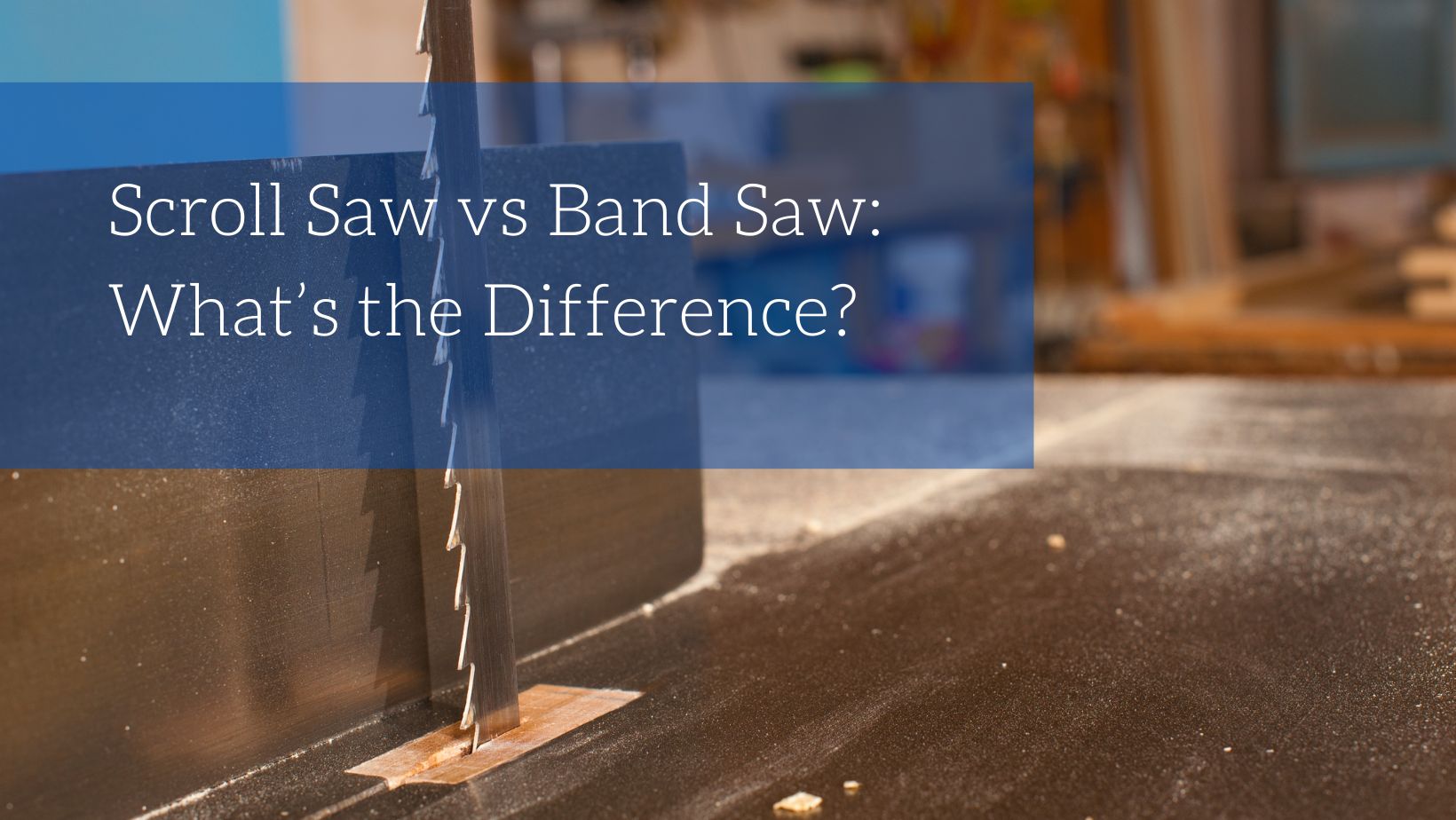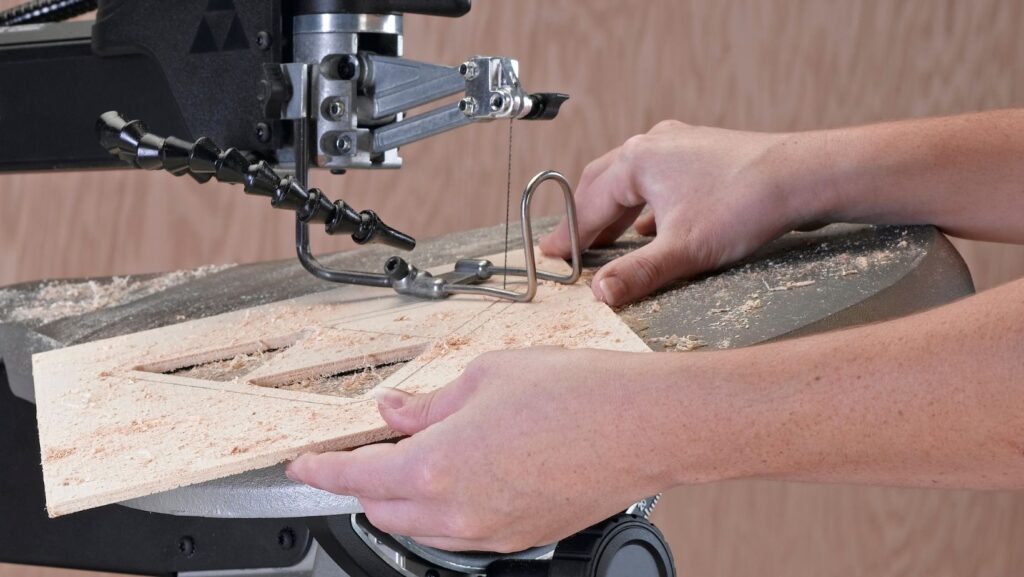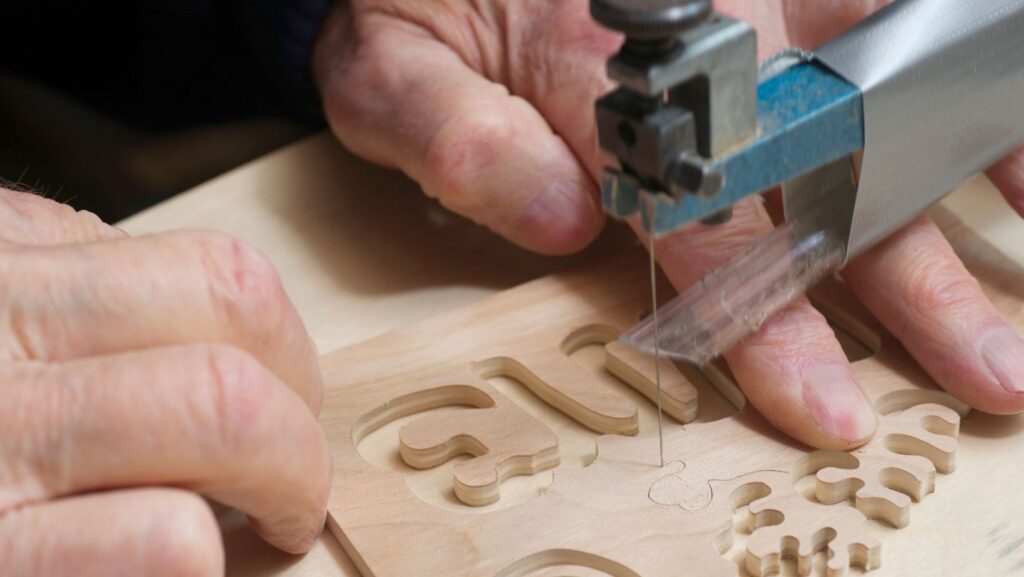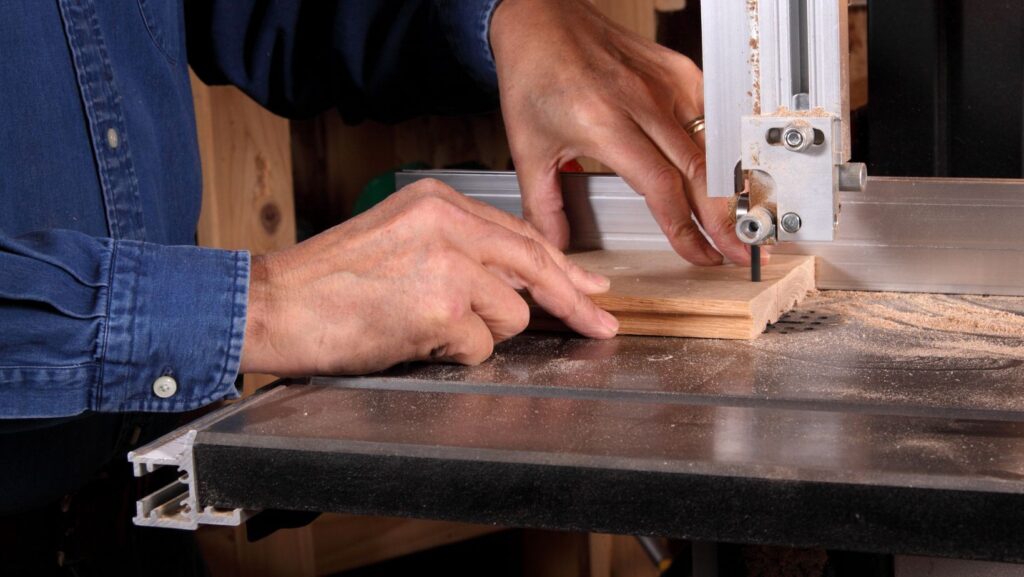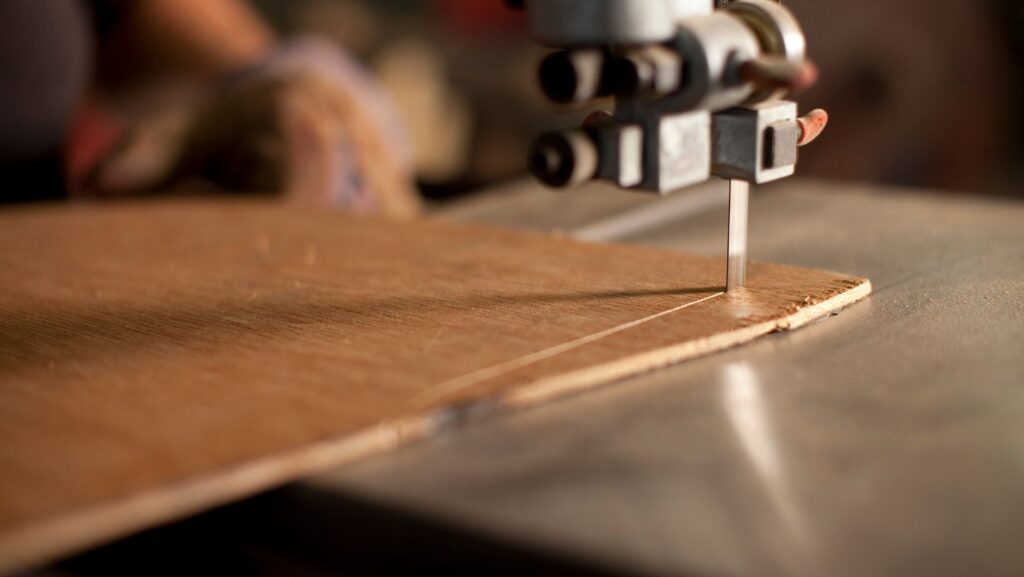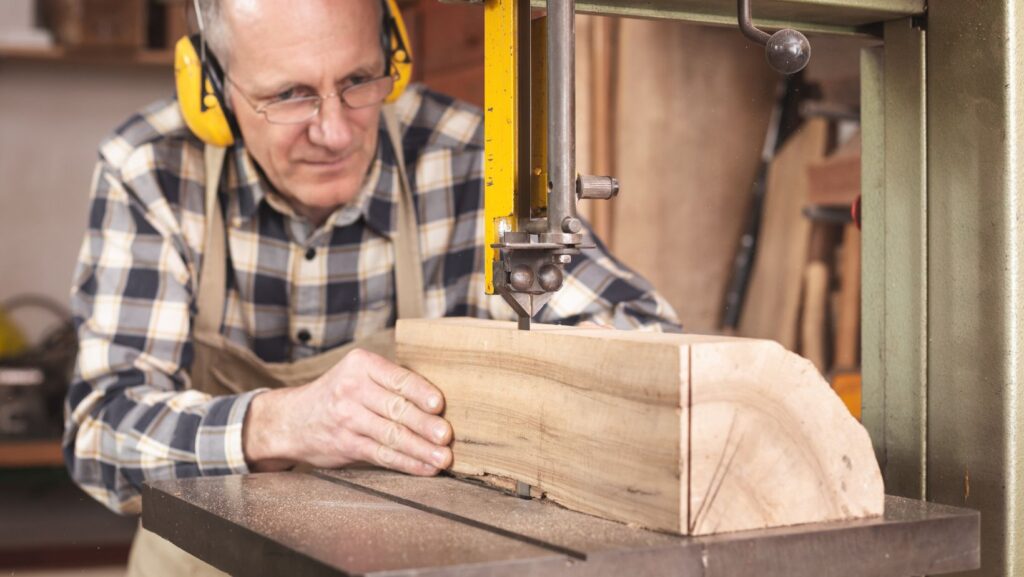People often ask, “Scroll saw vs band saw: What’s the difference between these two saws?” The answer is a good deal! Typically, a band saw is used for cutting larger pieces of wood, while a scroll saw is used for more intricate work with smaller pieces of wood. In this article, we’ll compare and contrast these two saws so you can make an informed decision. Stay tuned!
What’s a Scroll Saw?
When Should You Use a Scroll Saw
A scroll saw is often used by hobbyists to make intricate cuts in wood. As the name implies, this saw is ideal for cutting smaller and thinner materials, such as those used in the creation of jigsaw puzzles, patterns, wooden letters, and wooden numbers. The blade on a scroll saw is very thin and flexible, which allows the user to make extremely detailed work.
What to Think About Before Using a Scroll Saw
The blades
Scroll saw blades can be found in a wide range of sizes, but the most common lengths are between 3 and 6 inches. When it comes to thickness, scroll saw blades can generally handle materials up to 2 inches thick. Changing the blades is easy; scroll saws also usually come with adjustable tensioning mechanisms, allowing you to adjust how tight or loose the blade sits in the chuck. A tensioner at the top of the saw keeps the blades snug and guarantees consistent pressure throughout the cut.
The throat
The throat of a scroll saw is the distance between the blade and the vertical column at the back of the machine. This dimension helps determine how large and thick of a material can be cut on a scroll saw; typically, the smaller the throat size, the smaller materials can be worked with. When cutting longer work pieces, it’s important to consider this aspect as well, since feeding long pieces through can cause them to quickly reach their limits and run into the vertical column.
What’s a Bandsaw?
A band saw is an electric saw with a long blade made of a single piece of metal that is wound around two wheels. The band saw’s blade moves in a continuous downward motion, making it ideal for cutting through woodland materials such as tree branches and logs. Consequently, band saws are versatile tools that can be used for a variety of different purposes.
When Should You Use a Bandsaw?
A bandsaw is incredibly ideal for any type of wood that is thicker than 2 inches, as the size and shape of the blade make it possible to achieve even curves on the edges. The bandsaw’s ability to cut outside shapes makes it perfect for creating planter boxes, furniture, trim, shelves, rough sawn beams, and other larger projects that don’t require intricate details. As well as this, if you want to get creative with your projects, a band saw can be used for making interesting shapes such as spirals and circles.
RELATED: Saw Showdown: Jigsaw vs Circular Saw
What You Should Consider?
The Size
Band saws come in a range of sizes, all measured from the blade to the throat, which serves as the return path for the band saw blade. Furthermore, some band saws may also come equipped with a fence, which will help to further influence what size pieces of wood can be cut. When it comes to selecting the right band saw size for your project, it’s important to consider both the size of material you’re working with as well as its thickness.
The Speed
Bandsaw speed is an important factor to consider for safe and effective cutting. To ensure maximum safety, it’s important to understand the speed ratings of your blades and set the speed accordingly. The recommended speed for a circulating blade is 1000 feet per minute; however, it can go up to 5000 feet per minute if needed. Higher speeds can result in a smoother cut, but keeping it slightly slower may ensure safety. It’s also important to use a taut blade, as this will produce cleaner and safer cuts by providing better stability in the saw blade teeth. Generally speaking, for carbon steel blades, a tension of between 15,000 and 20,000 PSI is recommended for optimal performance. Slow speeds should be used if you’re new to band sawing or are working with particularly thick or hard materials, such as metal alloys.
In a nutshell, a band saw will be the better choice if you’re looking to do any serious woodworking. They’re more versatile and can handle tougher projects than scroll saws. However, scroll saws have their own advantages too. Because of their ability to make precise cuts, they are ideal for delicate work. No matter which one you choose first, be sure to invest in a quality blade to get the most out of your purchase.


